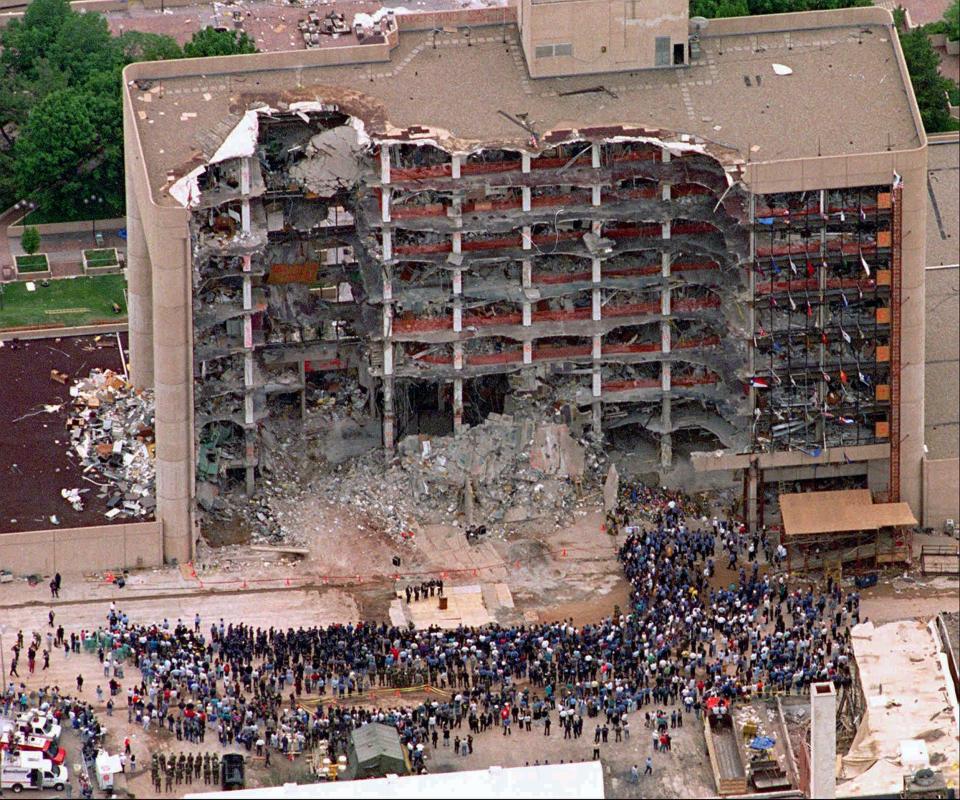30-ton shipment of explosive chemicals missing from railroad car after trip across West
A 30-ton shipment of a chemical that can be used as fertilizer or an explosive is missing from a California-bound railroad car after rail officials confirmed it disappeared during a trip across the West last month.
The railcar, loaded with more than 60,000 pounds of ammonium nitrate, left Cheyenne, Wyoming on April 12, a Union Pacific spokesperson told USA TODAY Tuesday. Two weeks later it was found empty at a rail stop in the California Mojave Desert, according to a report filed with the federal National Response Center on May 10.
Dyno Nobel said the material, transported in pellet form in a covered hopper car similar to those used to ship coal, likely fell from a rail car on the way to a rail siding (a short track connecting with the main track), about 30 miles from Mojave in Kern County, just east of Bakersfield.
"The railcar was sealed when it left the Cheyenne facility, and the seals were still intact when it arrived in Saltdale," a spokesperson for the company that manufactures explosives told USA TODAY. "The railcar was also observed after departure in the railroad’s Cheyenne yard with the seals intact and no sign of any leaks."
"The initial assessment is that a leak through the bottom gate on the railcar may have developed in transit," according to the company, releasing pellets onto the tracks over the two-week trip.
FBI investigating: Border Patrol kills Arizona man who reported migrants on property, family says
In addition to Dyno, the Federal Railroad Administration (FRA), the California Public Utilities Commission (CPUC) and Union Pacific are investigating the case.
Neither the FRA nor CPUC could immediately be reached by USA TODAY on Tuesday morning.
'Seal still intact'
Officials said the railcar was transported back to Wyoming where it will be inspected.
"Our review will be exhaustive to understand what led to this situation, but there is no indication of any danger to the public and no indication the pellets were intentionally taken by anyone," the Dyno spokesperson said.
"At this point in the investigation, we do not believe there is any criminal or malicious activity involved," said Kristen South, a spokesperson for Union Pacific, who works with its customers to investigate any loss of commodity or damaged freight.
"Our investigation is in its early stages because the customer recently reported the possible loss of fertilizer from one compartment of a multi-compartment railcar," South told USA TODAY Tuesday. "The fertilizer is designed for ground application and quick soil absorption. If the loss resulted from a railcar leak over the course of transportation from origin to destination, the release should pose no risk to public health or the environment."
'We don’t seem to learn': 10 years after tragic Texas chemical explosion, risk remains high
What is ammonium nitrate?
Ammonium nitrate is explosive under certain conditions. Mixed with something flammable and exposed to flame, it can explode.
Timothy McVeigh used 2 tons of ammonium nitrate mixed with fuel oil to destroy the Alfred P. Murrah Federal Building in Oklahoma City, killing 168 people in 1995.
But it's not a danger that exists in many places. That's because the chemical, once a popular fertilizer, is rarely used these days, USA TODAY reported in 2013.

Ammonium nitrate was the main suspected chemical in a Texas explosion that killed 14 people in April 2013.
The explosion at West Fertilizer Co. also injured more than 200 and left at least 50 homes uninhabitable.
Contributing: Elizabeth Weise, USA TODAY
Natalie Neysa Alund covers breaking and trending news for USA TODAY. Reach her at nalund@usatoday.com and follow her on Twitter @nataliealund.
This article originally appeared on USA TODAY: Explosive chemical missing from train identified as ammonium nitrate

